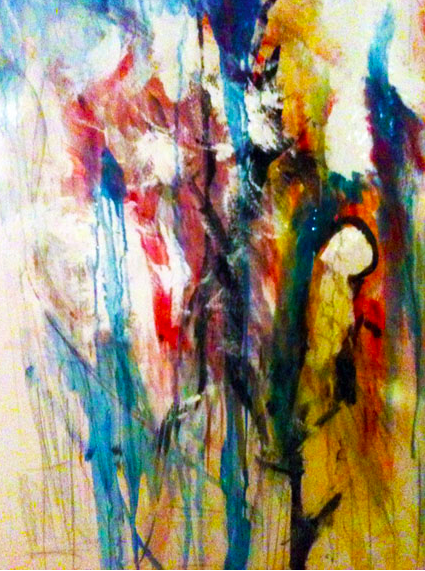
If you suffer or have suffered from depression, you know that the most basic tasks can be unbearable and leave you feeling apathetic and drained of your will to go on. Even the most simple activities of daily life like getting out of bed, doing laundry, and playing with your kids or dog can be too much for you to deal with. For people living with depression, talk therapy and medications may be helpful, but they are not the only solutions to relieving the depression. Art Therapy has become an effective treatment for supporting, releasing, and integrating the symptoms of depression by supporting an individual in exploring depression through their senses. Although on the surface art therapy may look less conventional, it has been seen to be just as effective as talk therapy because it uses the whole body’s experience, and not just a person’s intellect.
Sometimes, it’s hard to open up to a stranger about your most deep and secret emotions. Often, we’re told that we need to suppress our emotions and hide our pain even when we know that it would help us to express them. In art therapy, words aren’t always necessary. Some clay or a blank canvas can be way less threatening than giving your painful feelings, words, or images a voice. Scribbling on paper, as simple as that activity is, can bring light to darkness, open up a conversation, or expel a depressing thought. Just because hurt cannot be expressed in words does not mean that hurt is not being revealed.
In addition to being a bridge to communication between a client and their therapist, art therapy can help the client come to terms with what they are actually feeling. Maybe the individual feels numb or distanced or unable to feel when they are depressed. Creating art is at the heart of expression and emotion, and it can help to build the capacity to feel once again. Once individuals have created and externalized a part of themselves as something that is concrete and tangible, it is easier for them to actually acknowledge that emotion existed in the first place. By creating, a person is giving permission and voice to that which is difficult to speak. A person might feel a sense of peace, relief, or a movement of their depression once they have expressed it on the canvas.
Research shows that when we observe something that we believe to be beautiful, the neurotransmitter dopamine—located in one of the pleasure centers in the brain—is released. Interestingly enough, the brain activity observed when we look at art is actually comparable to the brain activity representing love! It’s nice to know that in addition to having created your own art, positive feelings increase.
Research proves art therapy is a beneficial method of treating depression across a wide spectrum of personalities. Many discover a newfound passion for art and are surprised at the talent that emerges once their emotions are channeled into their artwork. Only in this unique field are therapists performing what is considered by traditional psychoanalysts to be the hardest of tasks: getting those with depression to proactively express, manage, and overcome their symptoms … with the end result being something beautiful.
TJ Walsh is an artist and graduate student in Clinical Counseling at Eastern University in Saint Davids, PA.
Some References:
Study shows art may help with depression. (2012, June 6). Retrieved June 12, 2012, from Art Therapy: http://www.arttherapyblog.com/mental-health/study-shows-art-may-help-wit...
Bar-Sela, G. (2007, Nov. 16). Art therapy improved depression and influenced fatigue levels in cancer patients on chemotherapy. Retrieved June 12, 2012, from PubMed.gov: http://www.ncbi.nlm.nih.gov/pubmed/17351987
Holm, M. (2011, Aug. 11). Art therapy for depression. Retrieved June 12, 2012, from Natural Therapy Pages: http://www.naturaltherapypages.com.au/article/art_therapy_for_depression
Riley, S. (2001, July). Art therapy with adolescents. Retrieved June 12, 2012, from US National Library of Medicine : http://www.ncbi.nlm.nih.gov/pmc/articles/PMC1071468/
Vann, M. (2012, April 4). 8 Unconventional ways to ease depression. Retrieved June 12, 2012, from Everyday Health: http://www.everydayhealth.com/depression-pictures/unconventional-ways-to...